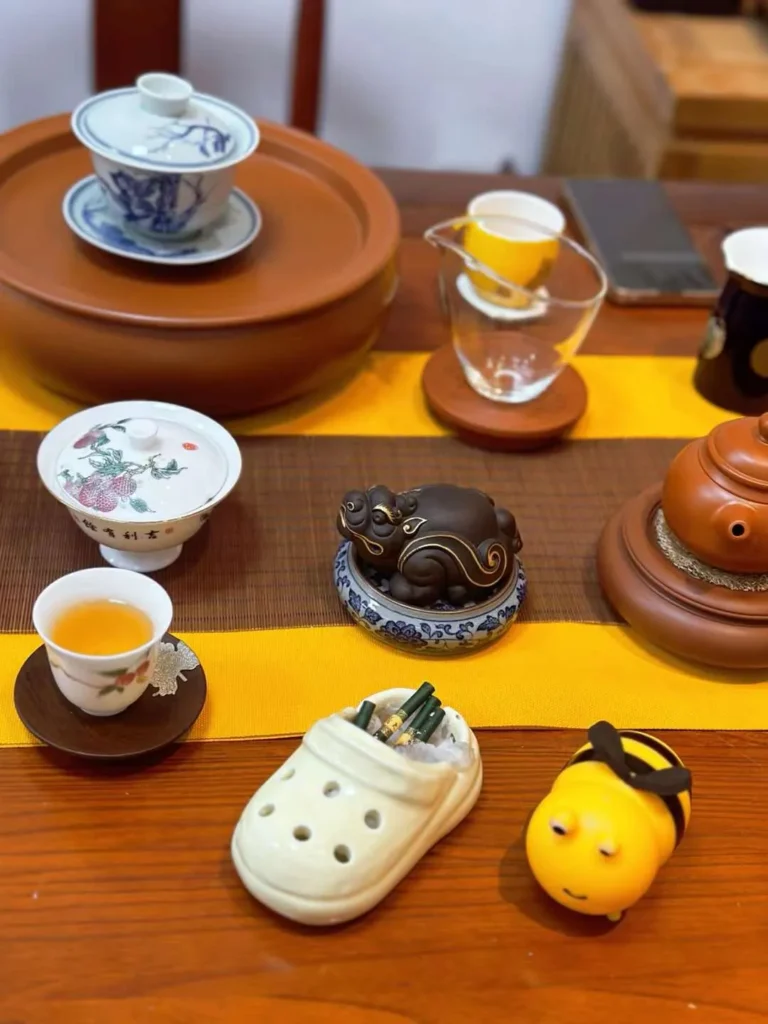Have you ever been captivated by the rich aroma of black tea, yet unsure of how to choose or brew it for the best taste? Fear not, for today I present to you a black tea tasting bible, guiding you from a novice to a connoisseur! Last year, I purchased various black teas for comparative study, and as New Year’s Day approaches, I’ve taken them out to enjoy again. With deepening understanding and more consumption, my perception of the same tea has subtly changed. Thus, from a personal standpoint, I’ve compiled a list of classic black teas for beginners and tasting suggestions for those in need, hoping more people will grow fond of black tea.
Begin your journey into black tea with these 5 classics!
4. Jiuqu Hongmei, also known as ‘Nine Bend Red Plum’, originates from Hangzhou, Zhejiang. It is renowned for its unique clarity resembling a red plum and is paired with Longjing as the ‘Two Wonders of Hangzhou’. Its appearance is tight, fine, and uniform with a dark, moist color. The tea soup is bright red, and the taste is fresh, mellow, and refreshing with a sweet aftertaste. When appreciating Jiuqu Hongmei, the aroma should be naturally fresh, lingering, and not overly sweet.
5. Yingde Black Tea, from Yingde, Guangdong, is popular for its high cost-performance ratio and its high, long-lasting aroma. The tea leaves are tightly rolled with a dark, moist color, and the tea soup is bright red with a rich, fresh, and invigorating taste, and a high, long-lasting aroma. The key to appreciating Yingde Black Tea is its strong, fresh, and unique rich aroma. For those who wish to systematically understand black tea, it is recommended to start with three classic types: Zhengshan Xiaozhong, Keemun Black, and Dian Hong. They hold a significant historical position in the black tea system and represent different flavors, making them an excellent choice for beginners. After familiarizing oneself with these three classic black teas, one can further explore other regional black teas such as Ning Hong, Chuan Hong, Yi Hong, Yue Hong, and Zunyi Red, to experience the unique flavors brought by different regional terroirs. Additionally, there are many specialty black teas named after places like ‘Jin Jun Mei’, ‘Zunyi Red’, ‘Xinyang Red’, ‘Guzhang Red’, ‘Jiuqu Hongmei’, and ‘Lichuan Red’. Generally, the price of black tea is not too extravagant; about one to two hundred yuan for half a catty is sufficient for daily use, and the taste is not bad. Brewing black tea: Mastering the skills to enhance the taste. Brewing black tea seems simple but involves many techniques. Mastering the correct brewing method can better release the aroma and taste of black tea, enhancing the drinking experience. It is recommended to use a lidded bowl for brewing black tea, as it can better control the water temperature and steeping time, preventing the tea soup from being too strong or too weak. It is not advisable to use tea utensils with strong adsorption properties (such as purple sand), as they can rob the fragrance and affect the aroma of black tea. Drinking from a porcelain aroma cup can better appreciate the aroma of black tea. Water temperature: 95-100°C. Specific steps for brewing: 1. Boil water using fresh pure water or spring water in a kettle. 2. Warm the utensils by pouring the boiling water into the teapot and tea cups to increase their temperature, which is conducive to the release of aroma when brewing tea, also known as warming and cleaning the utensils. 3. Add tea leaves, about 5 grams for a 110ml lidded bowl; adjust according to personal preference for stronger taste. 4. Pour the prepared boiling water into the lidded bowl, circling along the edge of the bowl without covering it immediately after pouring.Black tea does not require rinsing. 5. When brewing black tea, it is important to pour the tea quickly. Generally, after the water is poured, it is ready to be served within 5-10 seconds. Be mindful of the posture when holding the lidded bowl to avoid burns, and ensure that the tea water in the bowl is completely drained to prevent affecting the taste of the next infusion. 6. Finally, pour the brewed tea into your favorite sharing cup, then divide it into tea cups, and you are ready to enjoy the delicious, sweet tea. Appreciating a good black tea is not just about drinking tea, but also a love for life and a pursuit of beauty. During the process of appreciating black tea, one should feel the aroma, taste, and mouthfeel of the tea leaves, and experience the unique flavors that different black teas bring. Observe the color: The color of the tea soup should be bright red and clear for a good black tea (key point). Smell the aroma: The aroma of the tea leaves should be lofty, lasting, natural, and pure without any impurities. Taste the flavor: The taste of the tea soup should be rich, sweet, and refreshing with a lingering aftertaste, leaving a sweet sensation in the mouth. Admire the leaves: Observe the leaves after brewing, which should be fully expanded, fresh, tender, and full of vitality for a good black tea. By continuously appreciating and learning, you will gradually master the skills of black tea appreciation and elevate your taste to become a true connoisseur of black tea! It is hoped that this guide to black tea appreciation will help you embark on a journey of black tea, allowing you to find your true love in the world of black tea!



